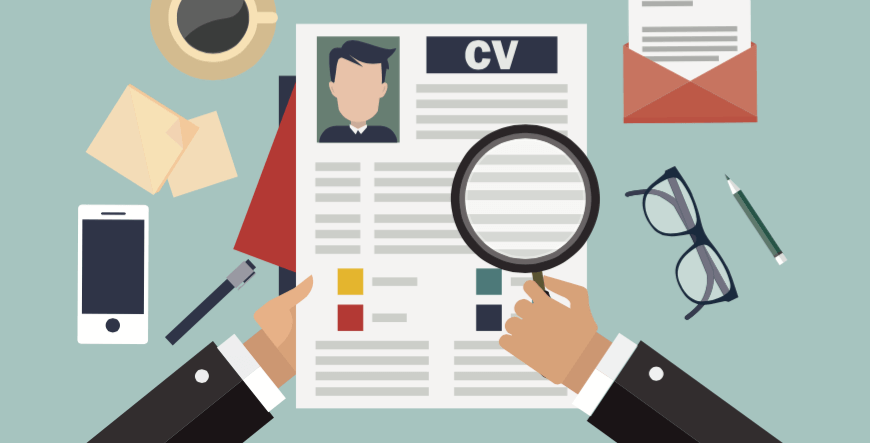
In today’s competitive job market, you need to take advantage of every opportunity you can to get ahead, so why not start where the whole hiring process begins: with your resume.
When looking for a new job, many people just add their most recent experiences to the same template they’ve been using since they first started working. But that puts them at a huge disadvantage. One rarely strikes gold the first time they go searching for it, and yet tons of people continue to peddle the same poorly organized resumes they’ve always used. So take advantage of that fact and get ahead by changing things up with your resume.
Crafting an effective and eye-catching resume is a balancing act: you want it to help you stand out, but you don’t want it to be gaudy or overdone. A great resume isn’t defined by how snazzy it looks, but by how effectively it presents you to potential employers. It’s less about your resume looking unique and distinct, and more about making you look unique and distinct.
Clarity, legibility and flow are the key principles of a great resume. Achieving those qualities, however, isn’t as straightforward as it might seem. Reformatting your resume should be about letting your experience and skills shine. So how can you go about doing that?
A few basics
As stated before, changing your resume isn’t about making it stand out more, it’s about making you stand out more. So, as far as appearances go, keep it simple.
Use 10-12pt fonts. Serif fonts, which are fonts with those little projections off the ends of the letters like Times New Roman, are classic and professional. Sans-serif fonts, like Arial, are sleeker, more modern and a bit more casual. Both options are good for a resume, but you might take into consideration the type of job you’re applying for and how you want to appear to your potential employers.
Use consistent margins and indentations and don’t overcrowd your pages. Also, curate wisely. You don’t need to include every job you’ve had since you were a teenager. Unless it directly relates, your summer flipping burgers when you were sixteen shouldn’t be included. And keep your resume to two pages, three at the most.
Break your resume into quadrants
It’s been widely documented that recruiters and hiring managers spend an average of six seconds looking at an individual resume. That means they barely even glance at some resumes that they receive. You should therefore optimize the format of your resume to ensure that all the pertinent information you’re presenting is easy to discern.
One way to do this is to break your resume into quadrants. People normally read from left to right and from top to bottom. That knowledge will help you format your resume.
You want an equal amount of text and blank space in each quadrant to create balance in your resume, but since the first thing readers see is the upper left quadrant, you want the most important information to be contained there.
Clearly outlined sections
Recruiters look first at your name, current title and company, current position start and end date, previous title and company, previous position start and end dates and education. So, include this information toward the top of your resume.
Since recruiters are going through tons of resumes, they might discard yours if it’s difficult to find the information they’re looking for. So make it easy for them to distinguish between different sections and different types of information. Do this by including clearly labeled headers demarcating the different sections of your resume. You can capitalize, bold or italicize them to make them easy to find. Then, include the company, your position and your dates of employment in a manner that is simple and clear.
Stress achievements
After you list your various professional positions, include a few bullet points that detail your responsibilities at each work place and also your achievements. Including quantifiable or concrete achievements will impress employers most. So, for example, if you helped increase revenue or oversaw the launch of a major new product make sure and mention it.
Quantifiable achievements are especially appealing to employers as they offer a concrete measure of your past contributions. That said, anything that directly benefitted your past employers and speaks to your skills and abilities can be listed. A resume, after all, is no place to be modest, so make sure you’re serving as an effective cheerleader for yourself.
Name drop
In addition to including a list of your achievements at previous jobs, find ways to mention any established industry leaders with whom you’ve worked. Even if you’re changing careers or trying to break into a new profession, recruiters and hiring managers will take note of the people you’ve worked with previously. It’s one of the many factors that goes into deciding who they’ll interview. And while you don’t want to simply state their name without any context, you shouldn’t be ashamed to name drop. Try something like: “launched an innovative responsive design platform with web-design leader so-and-so.”
Professional profile or summary
Beginning your resume with a professional profile or summary can be a good way to highlight unique qualities about yourself that you think make you an especially good fit for the position to which you’re applying. However, make sure to keep any such statements brief, a few sentences at most.
Also, tailor your summary to the job description. You want to make the argument for why you’re a specifically good fit for this position. A summary that highlights skills and abilities that don’t relate to the new job is a quick way to end up in the rejection pile.
Keywords
Since recruiters and hiring managers are scanning resumes so quickly, another way to appeal to them and to change your resume for the better is to include industry-specific keywords. Bigger companies, in fact, use electronic resume filters that will toss resumes that don’t have relevant keywords in them.
Use the job description as a template for discerning the best keywords to include. There are even websites that will analyze job descriptions for you and provide you with relevant keywords to strengthen your resume’s appeal.


